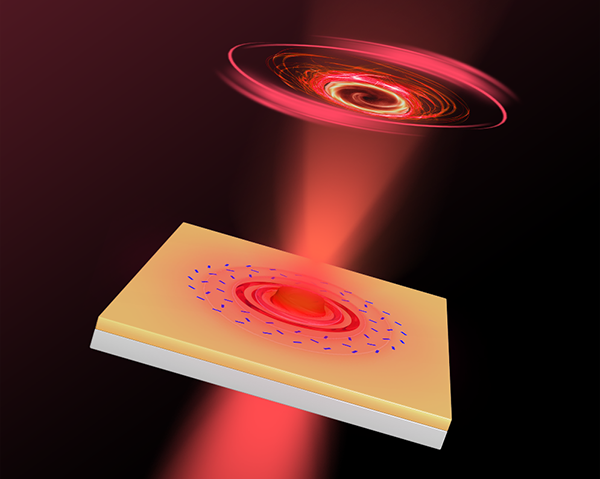Optical vortex is a special light field with a helical phase front. Due to the helical phase distribution, there is a phase singularity at the center of the vortex field, which causes a point of zero intensity. These unique optical properties make optical vortex show strong application value in many frontier fields including super-resolution imaging, optical manipulation and quantum information technology.
The current optical vortex generators are designed for far-field light or near-field surface plasmon polaritons (SPPs), and no research has shown that these two vortex fields can be integrated into a single optical device. However, with the growing demand for the integration of vortex generators with other photonic systems, such as small lasers and optical fibers, designing and implementing vortex generators with small size and diverse functions are of great significance to the future vortex-based photonics technology. Because plasmonic metasurface has the ability to support controlling of near-field SPPs and far-field scattered light, to implement vortex generator based on plasmonic metasurface that can work at both near and far fields is a promising candidate for future versatile photonic devices that utilize optical vortex.

Under illumination of circularly polarized light from the substrate side, the proposed metasurface can simultaneously generate focused surface plasmon vortex at the center of metasurface and far-field vortex of scattered light.
To this end, the research group led by Prof. Zheyu Fang from State Key Lab for Mesoscopic Physics and School of Physics, Peking University, proposed a bi-channel near- and far-field optical vortex generator. This work was published in Photonics Research, Vol. 8, Issue 6, 2020 (Qiao Jiang, Yanjun Bao, Jing Li, et al. Bi-channel near- and far-field optical vortex generator based on a single plasmonic metasurface[J]. Photonics Research, 2020, 8(6): 06000986).
By carefully designing the arrangement of the sub-wavelength rectangular nanoslits on the gold film, both functions of the near- and far-field optical vortex generators can be realized on a single metasurface. Scanning near-field optical microscope (SNOM) and far-field measurements show that this bi-channel optical vortex generator can effectively generate vortices in both near- and far-field channels. Moreover, since the near-field and far-field vortex topological charges of this device are independent of each other, these topological charges can be configured as different values, which makes it quite extensible for different requirements of future photonic applications.
These results provide new ideas for designing and implementing miniaturized and multi-functional vortex photonic devices. Future work will aim to further explore the applications of this new type of optical vortex device in integrated photonic systems.


